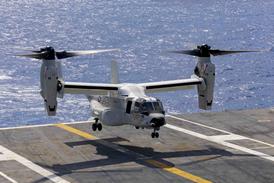Airbus is confident that a planned A350 production rate hike to 12 aircraft monthly can be accommodated both by the supply chain and the airframer’s own industrial system.
The manufacturer had previously worked towards a 10-per-month output, and had practically achieved this level in 2019 – when A350 deliveries in a single year peaked at 112 – just before the Covid-19 pandemic forced a manufacturing rate cut.
Airbus has been gradually recovering A350 production, aiming to restore the 10-per-month figure in 2026.
But recent strong order activity for the twinjet family has generated a backlog of 685 aircraft – including 415 baseline -900s as well as 55 of the new A350 freighter. This backlog is set to rise with Indian carrier IndiGo’s confirmation that it will take 30 A350s.
Speaking during a first-quarter briefing on 25 April, Airbus chief executive Guillaume Faury pointed out that the original sizing of the A350 production system was centred on a 13-per-month build rate.
“Therefore we’re within the envelope of what was sized 15 years ago when the production system launched,” he says.

Faury acknowledges that “differences” have emerged since then – including a larger number of -1000s, and the A350 freighter which is largely based on the -1000.
But he says the investment to increase the rate, while important, is “marginal” in terms of tooling and capital expenditure.
“We think this makes sense for us, as the original production system was sort-of pre-sized for these rates,” he states.
“We don’t need to go for an additional [final assembly line] or additional plants for some of the major sections.”
Faury declines to quantify the investment and workforce required, but says he is aware that the overall environment is “already stressed and stretched on hiring resources”.
He says, however, that the hike to 12 A350s per month in 2028 followed a “deep” supply-chain readiness assessment, and balances the customer demand with the ability of suppliers to meet the ramp-up.
“Rate 12 has been assessed positively,” he states. “That’s why we’re making it now an official target.”
Faury says the previous target of 10 A350s per month by 2026 is “no longer a reference” and this output level has been relegated simply to an inevitable crossing-point which will occur “at a point in time, probably not far from what it was before”.
“We really want to avoid any potential confusion or misunderstanding with the supply chain,” he says.
“Rate 10 is no longer what we’re targeting. We really want to make sure there’s no misunderstanding, no room for ambiguity, on the rates.”


























